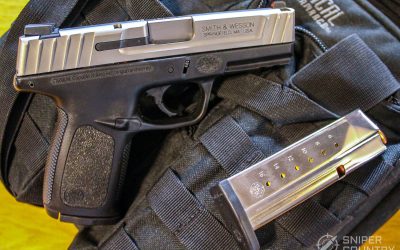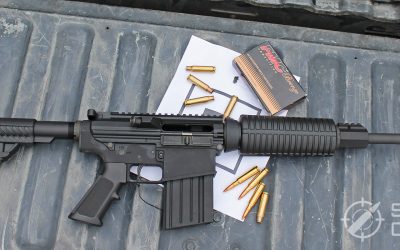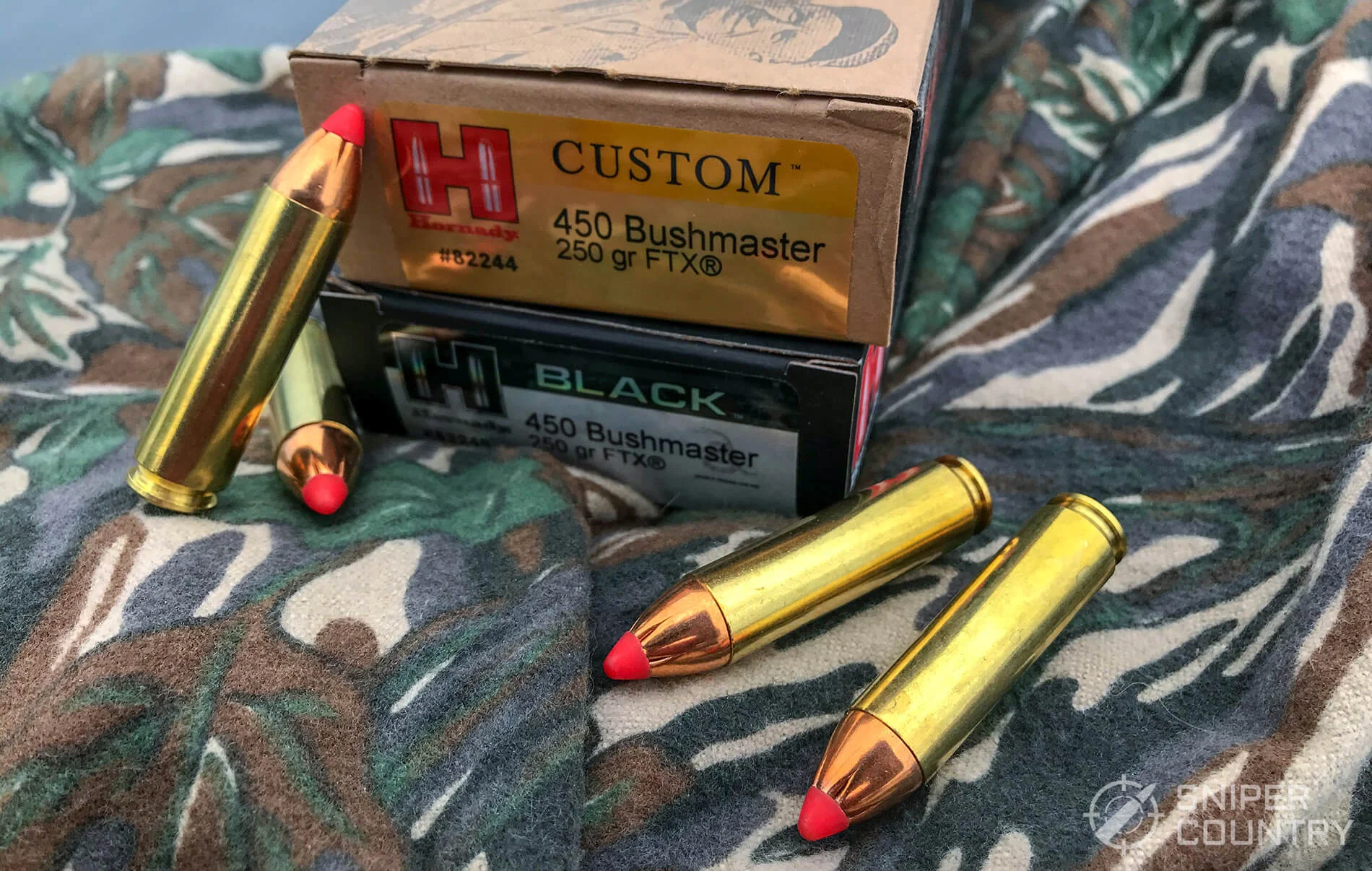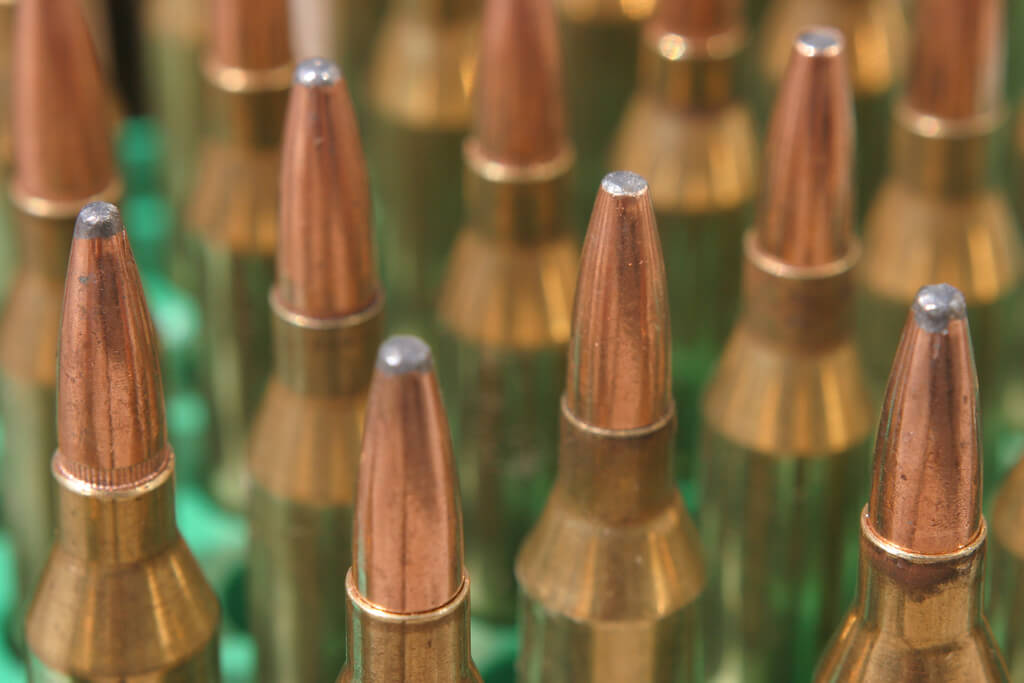If you compare AR-10 vs AR-15, there is very little difference in terms of style and function. Both are children of ArmaLite chief designer Eugene Stoner. Chronologically, the AR-10 came first, and the AR-15 resulted from a downsizing of the rifle and caliber.
The difference in these two guns can be summed up in one word: Caliber. The history of the U.S. military service rifle follows the history of these two cartridges. While the 7.62×51 NATO was the round of choice for the M14, it was quickly replaced by the 5.56×45 NATO M16. However, the 7.62×51 NATO was not completely relegated to the dustbin of history. It still remains a vital part of the U.S. military inventory as a sniper rifle and medium machine gun cartridge.
This article will explore the history of the ArmaLite Rifle and give a comparison between modern day ARs in the 7.62×51 and 5.56×45 calibers. There is much more in common than different between these rifles once you get past the caliber.
| Cartridge | Price (20 Rounds) |
|---|---|
| 308 Winchester Super-X 180gr | $21.99 |
| 308 Nosler Ballistic Tip 165gr | $30.99 |
| 308 Federal Vital-Shok Ballistic Tip 150gr | $31.99 |
| 308 Hornady BTHP Match 168gr | $23.99 |
| 308 Federal Gold Medal Sierra Matchking 175gr | $25.99 |
| 30-06 Federal Vital-Shok Nosler Partition 165gr | $39.99 |
| 30-06 Hornady GMX Superformance 150gr | $54.07 |
| .30-06 Federal American Eagle Jacketed Hollow Point 150gr | $24.99 |
| 30-06 Nosler Custom Hand Loaded AccuBond 200gr | $65.90 |
History of the ArmaLite Rifle (AR)
The AR-10 and AR-15 are fruit from the same family tree. Their history begins in 1956, when the U.S. military opened a competition to firearms manufacturers to design a new rifle for the infantry. One of the entrants was ArmaLite, a recently formed division of Fairchild Engine and Airplane Corp. ArmaLite had working for them a designer named Eugene Stoner, and Stoners original submission to the military competition was a 7.62x51mm rifle that they called the AR-10. The rifle was revolutionary in its design, with its lightweight receiver and integrated carrying handle. Although the AR-10 lost the competition to Springfield Armory’s T44 design (later designated by the military as the M14), Stoner’s ability as a designer was noted by all. After the first M14s went up against AK-47s in the jungles of Vietnam, reports from the frontlines complained that the gun was difficult to control in automatic fire mode, and troops could not carry enough of the heavy ammo to gain fire superiority over the enemy with the smaller 7.62x39mm AK-47 ammo. With these limitations becoming a problem in Southeast Asia, Stoner was tasked to design an ArmaLite Rifle chambered for the new .223/5.56mm round, a much lighter round than either 7.62mm variants. The new rifle was dubbed the “AR-15” and resubmitted to the Army for testing in 1958. The AR-15 outperformed the M14 in every possible way during testing, but for unknown reasons, Army Chief of Staff General Maxwell Taylor passed over the AR-15 again in favor of the M14. Dejected, ArmaLite sold the rights to the AR-10 and AR-15 to Colt Firearms in 1959.
BONUS OFFER: Get your free shooting range targets to print at home!
Get your free targets to print at home!
At a Fourth of July party in 1960 held by Fairchild president Richard Boutelle, Air Force Vice Chief of Staff General Curtis LeMay was invited to shoot the AR-15 at watermelons set up on posts. The General was impressed with the rifles light weight and accuracy and became the rifle’s first high ranking advocate. General LeMay placed an initial order of 8,500 AR-15s. This marks the first time that the AR was placed into the inventory of the U.S. military. A year later, LeMay (now USAF Chief of Staff) ordered an additional 80,000 AR-15s to be issued to his airman. General Taylor, now Chairman of the Joint Chiefs of Staff (and LeMay’s immediate boss), nixed the purchase. At this point in the ARs history, we see opposing views on the rifles worth from the Army and Air Force. General Taylor from the Army has repeatedly passed over the AR-15, while USAFs General LeMay, after his hands-on experience with it, becomes a staunch supporter.
Back in Vietnam, U.S. Army Special Forces eventually got their hands on AR-15s and sent positive reviews home, lauding the rifles effectiveness in combat. The juxtaposition of the Army and Air Force positions on the rifle led Secretary of Defense Robert McNamara to direct the Secretary of the Army to (once again) conduct full scale testing of the AR-15 against the AK-47 and M14, and to report the findings. Again, the results were in favor of the M14. Undaunted, McNamara then directed the Army Inspector General to conduct an investigation into the nature of the testing. The office of the IG found that the tests were greatly bias to favor the M14. One glaring example noted that accuracy tests were conducted for the M14 in semi-automatic, but for the AR-15 conducted in fully automatic.
In 1963 when McNamara was informed that the production of M14s would not be able to meet the demand set forth the Department of Defense, and the AR-15 being the only fully vetted alternative, he cancelled the remaining orders of M14 and officially order all military branches adopt the AR-15, which was redesignated as the M16.

Photo Credit: Wikipedia
Popular Articles
Differences Between AR-10 vs AR-15
For this comparison, and because we’ve talked about ArmaLite so much already, we will use the new ArmaLite brand firearms, designated the AR-10 and M-15.
The modern AR-10 rifle is as close to identical with the AR-15 as two rifles can be. The design of the AR-10 and AR-15 are identical. The difference is the caliber, and from of the difference in caliber rise a host of minor differences. Barrel rifling, ballistics, and magazine capacity are chief among these caliber differences.
The ArmaLite AR10TAC16 is the AR rifle marketed for “tactical” use. It is chambered for the 7.62x51mm (.308 Win) and features a 16″ AR-10 barrel with a right-hand twist at a rate of 1 twist per 11.25in.
Compare this to the M15TAC16, which is the ArmaLite 5.56mm (.223) tactical rifle. It also comes with a 16″ barrel but has a right-hand twist at a rate of 1 twist per 7in.
Because the AR-10 fires a more powerful round, the internal mechanics need to be stronger to withstand the additional stress. Because of this, the overall weight of the AR-10 is heavier than the M15, 8.5lbs to 7lbs respectively. Magazine capacity is reduced in the AR-10 because of the larger cartridge as well. 25 rounds is the capacity of the AR-10, compared to the familiar 30 round capacity of the M-15.

Below, ArmaLite M-15
Photo Credit: ArmaLite.com
BONUS OFFER: Get your free shooting range targets to print at home!
Get your free targets to print at home!
Ballistically speaking, the more powerful .308 Win has a flatter trajectory and longer maximum effective range. At combat range, the .308 Win has more “knockdown” power compared to the smaller .223 Rem. However, .223 Rem is designed to fragment upon penetration, leaving multiple deep wound channels instead of punching through the target in a straight line like the .308. This effect increases lethality and, combined with the ability to carry more ammo, makes .223 Rem a favorite amongst militaries across the globe. The .308 Win, with its flatter trajectory and higher muzzle velocity, makes it a great choice for sniper rifles. In fact, though the M14 was replaced in the early ’60s as the main battle rifle of U.S. forces, it remains to this day the standard issue sniper rifle of the infantry. .308 Win is also the primary choice of caliber for many police department swat team snipers.
Conclusion
As you can see, there isn’t much difference between the AR-10 vs the AR-15. The difference in caliber results in a slightly larger and heavier rifle, but that’s about it. When looking at combat applications of the AR rifle, the caliber of rifle has a lot to do with your decision. The heavier ammo of the AR-10 makes it harder for troops to carry an adequate amount. While the .308 Win has more “stopping” power, the .223 Rem’s ability to fragment upon impact makes it more lethal than a round that punches clean through its target.For civilian applications, there is virtually no difference between the rifles. Everything you can do with an AR-15 you can also do with an AR-10. Accuracy is nearly the same. (Accuracy has more to do with the ammunition than the rifle). Both can be accurate at mid-range distances, 400-600 yards.The history of the ArmaLite Rifle can be traced back to the U.S. military competition and testing of the late 1950s. During its initial testing and adoption into the U.S. military, the ArmaLite Rifle was fraught with controversy, with bogus tests conducted by the Army and extreme bias against the rifle. That controversy took a new form in ’90s and 2000s, when calls for “Assault Weapon” bans became more frequent. Calls for banning have increased in recent years, a result of highly publicized school shootings where AR-15s were used. But the fact remains that rifles (all rifles) account for less than 4% of murders in the United States, and “Assault Weapon” bans chiefly address cosmetic aspects of weapons, and not the functionality, making them all bluster but not very effective at stopping potential murders.










![9mm Glock Models [Ultimate Guide]](https://snipercountry.com/wp-content/uploads/2018/10/Glock-17-vs-Glock-19-vs-Glock-26-vs-Glock-41-vs-Glock-43-WM-400x250.jpg)
![Handgun Caliber Chart [2025 Ultimate Guide]](https://snipercountry.com/wp-content/uploads/2018/10/Handgun-Caliber-Comparison-400x250.jpg)
![Rifle Calibers [Ultimate Guide]](https://snipercountry.com/wp-content/uploads/2018/12/Header-1900-400x250.jpg)








